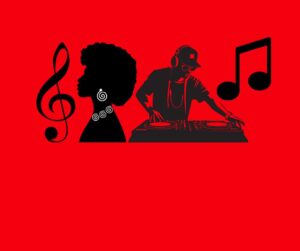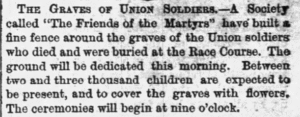Once upon a time in Black Entrepreneur History lived an African American man named George Bonga who became an independent fur trader, retailer and store owner and who was grandson of the first Black man in the state now known as Minnesota.
Childhood
George Bonga was born on August 20, 1802 in Duluth Heights, St. Louis City, Minnesota before the state was even a state. He was born to Pierre Bonga, a Black free man and fur trader, and an Ojibwa Native American woman. Although biracial, he had no Native American features similar to his mother, but grew to be a strong, dark-skinned man, tall and well over 200 pounds into adulthood.
His grandfather was the first African American man to ever live in the area. His name was Jean Bonga, an enslaved man who worked for the British under a man named Capt. Daniel Roberston. Upon Robertson’s death, Jean Bonga became free and married an African American woman named Jeanne who worked under the deceased Roberstson as well.
George Bonga was born free due to his parents being free, and he grew up in the way of the Ojibwa, his mother’s ethnic group. He spoke three languages – English, Ojibwa and French fluently. When he was a just a boy, he got his education in Montreal, Canada, however, he didn’t get a full education by today’s standards. Despite this, he was very intelligent and business savvy.
The only sibling recorded was a brother he had named Jack.
Career and Legacy
George Bonga was a brilliant business man. After working for the American Fur Company as a trapper, he took all he learned and launched his own business, becoming an Independent Fur Trader.
One would think he hit road blocks with both Native Americans and Whites at that time in the fur trading business, however, there were hardly any white people who lived in the area now known as Minnesota, and there were definitely hardly any Black people. Therefore, George Bonga was well known, and Native Americans in that area weren’t prejudiced with whom they did business with based on the color of their skin.
As a matter of fact, there was no term for what George Bonga looked like at that time in the area. Anyone who was not a Native American was termed “white” – even if Black. Therefore, this was what they called Bonga – white- because he wasn’t a full blooded Native and looked nothing like them.
Because of this, it would shock many when Bonga would say he and another were “the first white men to ever come to this country.” Again, there was no term there for Black nor was Minnesota a state yet.
In and around 1860, George Bonga owned a multitude of stores and canoes in his Independent Fur Business in the location of Leech Lake. These stores were once in jeopardy when they were threatened to be burned to the ground by supporters of an accused murderer named Che-ga-wu-skung.

The reason George Bonga and his business was targeted was because he was the one who captured Che-ga-wu-skung in order for him to go on trial, though the man was acquitted. George Bonga is quoted as stating, according to The Star Tribune of 1995:
“the talk of some of the Indians here is… if Che-ga-wu-skung is hung, they will set fire to my store and break my canoes.”
Star Tribune (Minneapolis, Minnesota) 06 Feb 1995, Mon Page 35
He and his wife also owned and operated a lodge near Otter Tail Lake (Fergus Falls, Minnesota) to which patrons would stop in and enjoy hearty meals. He was a great entertainer and loved to take care of his guests.
His employees would man the canoe when visitors came from around the nation, and take them out on the lake and it would be George Bonga himself who would sing. He was described as an honest and kind man, very friendly who loved to enjoy himself.
At that time of 1860, his personal estate was worth approximately $80,000 in present day (2021) which was $2,500 back then.
Interpreter
George Bonga was also an independent interpreter for Governor Louis Cass whenever there was to be business to tend to with the Native Americans.
Marriage and Children
George Bonga married an Anishinaabe Native American woman named Ashwinwin Bonga and they had four children – James, Peter, William and Susan.
George Bonga’s Death
George Bonga passed away on November 30, 1874 in Onijum, Cass County, Minnesota and was buried in Saint John’s Episcopal Cemetery.
To this day, the Bongas descendants, sometimes spelled Bongos, are still alive today in the area.
Sources
- Star Tribune (Minneapolis, Minnesota) 06 Feb 1995, Mon Page 35
- Year: 1860; Census Place: Leech Lake, Cass, Minnesota; Page: 459; Family History Library Film: 803567
- Find a Grave, database and images (https://www.findagrave.com : accessed 16 February 2021), memorial page for George Bonga (20 Aug 1802–30 Nov 1874), Find a Grave Memorial no. 82501366, citing Saint Johns Episcopal Cemetery, Onigum, Cass County, Minnesota, USA ; Maintained by Cecelia McKeig (contributor 47602903)
- Photo of George Bonga is Public Domain taken during his life in 1800s, thus no copyright. Sourced from Wikipedia





More Related Stories
James Wormley – Founder of the Most Expensive Hotel in Washington D.C. in 1800s – the Wormley Hotel
William E. Matthews – Wealthy Financial Broker & Civil Rights Leader of 1800s
Charles Porter Grove – Owner of Montana and Illinois Gold Mining Company & Leader of the “Dreamed” Grove City, Montana